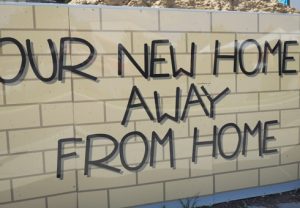Moving to Australia: affordable housing
19 October 2016 by News DeskMoving to Australia will be impacted by improved affordability and new opportunities for owner occupiers.
 Moving to Australia to cities like Melbourne, Perth or Adelaide will get cheaper as house and apartment prices fall.
Moving to Australia to cities like Melbourne, Perth or Adelaide will get cheaper as house and apartment prices fall.
Brisbane is set to see highest house price growth of the three largest capital cities over next three years, while Brisbane unit are forecast to fall by 8.2 per cent in the same period.
Sydney house prices will remain flat in coming years while unit prices are forecast to fall 6.8 per cent.
Melbourne house and unit prices are expected to fall with cost of units falling by 9 per cent.
If you are thinking of moving to Australia, the cost of renting or buying a property across the country is falling and this price decline will continue for the next three years.
Moving to Australia: affordable housing
SYDNEY – Sydney’s average house price reached $1.048m at June 2016 and is forecast to rise by 1.7 percent to $1.065m by mid-2017 before decreasing to $1.055m by June 2018 and $1.050m by June 2019, resulting in average house price growth being effectively flat by the end of the forecast period.
Price growth in the Sydney unit market has been below that of the house market. Sydney’s average unit price rose by an estimated 41 percent in the four years to June 2016. However, price growth has already started to flatten with the average unit price growing by just 3 percent in 2015/16.
Sydney’s average unit price growth is forecast to fall 1.8 percent in 2016/17 and cumulatively by 6.8 percent during the three years to June 2019 to an average unit price of $680,000.
MELBOURNE – The underlying demand and continued growth of the Melbourne house market has been underpinned by a strong population increase, with Victoria recording a net boost of 11,000 people in the year to June 2016.
This population growth has continued to maintain a deficiency of dwellings in the Melbourne market despite continued growth in new dwelling supply.
Melbourne will see dwelling completions peak in 2016/17. Short term population growth is expected to ease and a 0.6 per cent price decline in the average house price is forecast for the period ending 2018/19.
Record levels of unit completions and a strong project pipeline are expected to affect Melbourne’s average unit price, which is forecast to decline by a total of 9 per cent to June 2019.
BRISBANE – Moderate house price growth in Brisbane during the past four years is in line with Queensland’s challenging economic conditions.
Queensland is not expected to be able to capitalise on Brisbane’s affordability advantage over Sydney and Melbourne. Nevertheless, an overall dwelling deficiency should help to support Brisbane’s average house price that is forecast to rise by 6.5 per cent to June 2019, the highest price growth during this period of the three largest capitals.
PERTH – After peaking in December 2014, Perth’s average house price declined by 5.6 per cent in the eighteen months to June 2016. Mining investment is now greatly reduced and economic conditions have weakened.
Perth’s average house price is forecast to decline by 3 per cent to June 2018 while the forecast median house price at June 2019 is expected to be 10% below its 2014 peak.
The Perth housing market is expected to weaken across both housing and unit markets. The average unit price was down by 6.5 per cent to June 2016 with further declines totalling 6 per cent forecast in 2016/17 and 2017/18 before prices decrease further to June 2019.
ADELAIDE – The average house price in Adelaide is forecast for limited growth of around 0.9 per cent in 2017/18 and an overall decline of 1.3 per cent is forecast by June 2019.
Adelaide’s unit and apartment market is expected to remain relatively flat during the next three years declining a total of 0.6 per cent to June 2019 in line with house prices.
HOBART – Hobart’s average house price is forecast to rise around 4% per annum or at a cumulative rate of 12.5 per cent by June 2019.
With investor activity declining, the softness in the unit market is expected to continue to dampen demand, limiting average unit price growth to between one per cent and two per cent per annum through to 2018/19.
DARWIN – Darwin’s average house price is forecast to decline by 6.3 per cent by June 2019.
average unit prices are expected to decline by 4 per cent in 2016/17 followed by further declines of 4 per cent and 2 per cent in subsequent years to take the average unit price 10% lower by June 2019.
CANBERRA – Canberra’s average house price is forecast to rise by 3.5 per cent in 2016/17 with a further growth of 2.4 per cent and 2.3 per cent in the two years to June 2019.
In contrast, the average unit price fell 2.6 per cent in 2016 and a further downside of 4 per cent is forecast in 2016/17 and 2018/19 by which time the dwelling supply is expected to peak and be absorbed by June 2019, according to QBE’s Housing Outlook 2016-19.
Moving to Australia? For expert info and help with buying property in Australia, Click Here
Are you thinking of moving to Australia? Click here for expert help: Skilled Migration to Australia
Want to get a job Down Under? Click here for expert help: How to Get a Job in Australia
Click here for tourist information about Australia: Visit Australia


